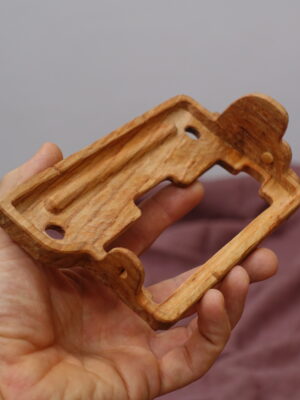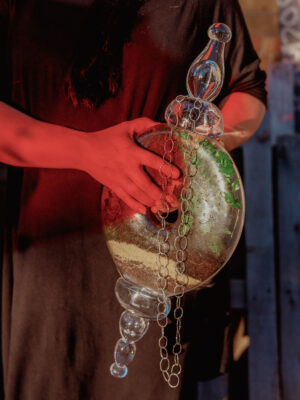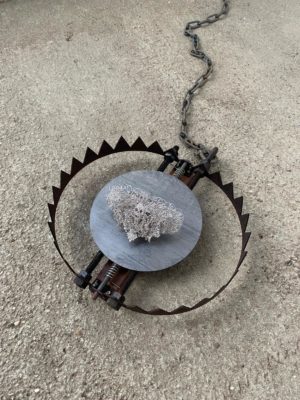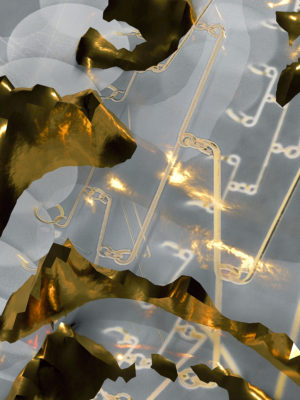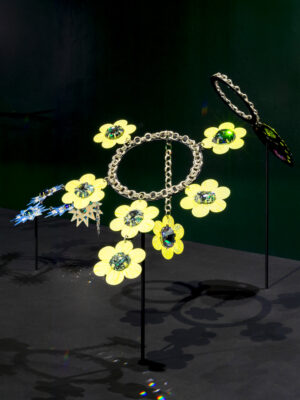Current Obsession: In the group exhibition ‘Tools of Thought’ you are showing a triptych. You mentioned before that the triptych is closely related to your earlier work ‘The Pipe wrench lanyard’. Could you talk a bit about these works and their connections and why did you choose this form?
Tobias Alm: The pipe wrench lanyard was specially made for the show Schmuckismus in Munich, curated by Prof. Karen Pontoppidan. In this work, I chose to revisit the tool-human hybridity that I worked with in my Master’s exam work. I took great care into the choice of materials that evoke certain associations and that combine to form a harmonious but at the same time disruptive whole.
The silicone skin, made to imitate my own skin, has a clear bodily connection. So do the hand-dyed felted wool parts. This bodily association both clashes and unites with the shape of the pipe wrench, a tool that has connections to a certain kind of labour and to heavily gendered practices in society.
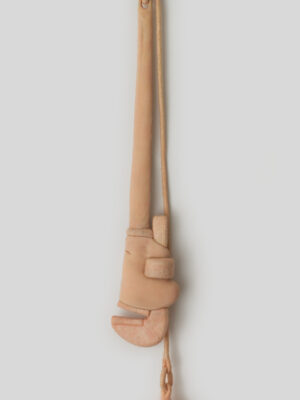
The new triptych shares many of these features, but I added new elements and made some changes in my approach. The silicone and the wool are joined by elements that are hand-carved in elder wood. Elder is a type of wood that I have a special relationship to, and that has a red tint that is close to my own skin color. The triptych can be seen as hybrids of my own body and three different electric power tools.
When I think, talk and write about my work, I often focus on the materials and the craft techniques that I use. These aspects are very central in my practice, and I hope that this focus on material qualities makes my work into thought-provoking “tools of thought”, and that these works can take part in interesting discussions with other objects and humans.
CO: How do you look at different categorizations of jewellery f.e. wearable, non-wearable or sculptural? How do you make the choice of making either a jewellery piece or a sculptural object and what form has prevailed in your work recently?
TA: My work often ends up in the gray area where the connection to the world of jewellery is not the most common. Inviting an object that is not usually categorised as jewellery into the jewellery discussion can often lead to interesting thoughts and discussions.
My aim with making “jewellery” has during the last ten years or so been more focused on creating a certain emotional connection between the object and the humans that interact with it, than on the actual physical wearing of objects on the human body that is so central to many other practices. There is a great force in how I connect with an object already when I think thoughts like “this is supposed to physically join with my body in the way jewellery often does”. This mental connection is there even if the actual physical joining will never take place.
In recent works, I also explore working with objects with no connection to jewellery. There is still a very strong connection to the human body in these objects, and I believe that this focus has a lot to do with my parallel jewellery practice.
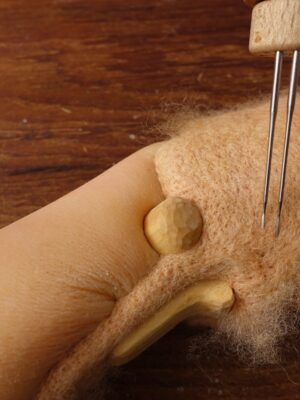
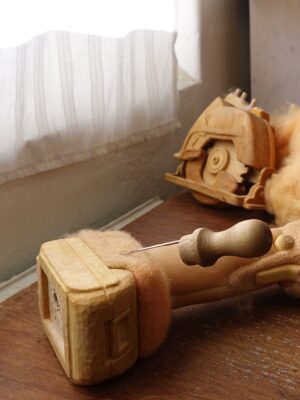
CO: In your body of work (Chatelaine, The Tool Belt, The Pipe Wrench Lanyard) you
materialize your ideas around masculinity, male feminism, power structures and
jewellery through reinventing the forms of traditional victorian jewellery or the recreation of a toolbelt, and recently hand tools made of soft materials. Could you tell me more about from what experience is this interest arising from and about the symbolism behind these objects?
TA: There are two big factors in why my work has been centered around masculinity for many years now. The first one is that I became a father in 2012, which made me question my own role in gender structures in a whole new way. The other factor is that one year later I was introduced to the Châtelaine by my professor Karen Pontoppidan, which started the whole process with The Tool Belt, my master essay and The Châtelaine.
The Châtelaine was an attempt to materialize the essence of my master essay. I was using the historical piece of jewellery that gave the body of work its name as a crowbar to force the tool belt into the world of jewellery. I encouraged people to join me in seeing the striking similarities between these two objects. I also wanted people to ask themselves what role these objects have in destructive gender norms.
Lately, I am trying to move away from the thought that my work materializes my ideas. Instead, I see them as objects that have their own agency. They will have relationships with humans and other objects that take other paths than those of the thoughts and feelings that I had while making them. I still play with the gendered associations of material qualities like softness and hardness, and with objects that are heavily gendered in human cultures, but I try to work more with questions than answers.
“Lately, I am trying to move away from the thought that my work materializes my ideas. Instead, I see them as objects that have their own agency.”
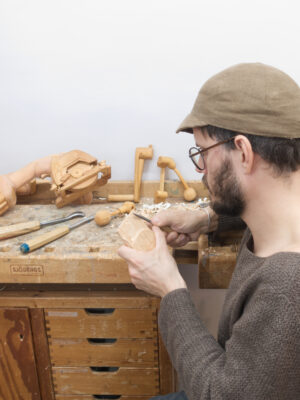
CO: What are your plans for the near future?
TA: I am currently very busy with finishing the work for my upcoming solo at Galerie Rob Koudijs in Amsterdam. I don’t want to say too much about the project yet but can say that it takes a different path than my other work. The process has been greatly influenced by my new second job as a woodcraft teacher for children. I have also been diving into thoughts on how humans interact with the forest and the threes on this planet.
One big future plan for me is to be less anxious in my work as an artist and make sure to enjoy the process more. After my master’s exam, I steadily built up an anxious and stressful relationship with my studio work, until it came to a point where almost all of the joy was lost. I have always felt a surge of joy and pride when I finally finish a body of work, but the journey towards the finish line was getting increasingly tougher. I am working my way out of that situation.
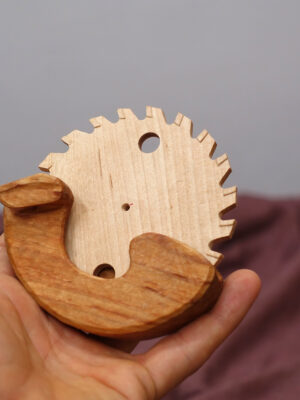
CO: Would you like to say anything more about that?
TA: I would like to tell you about how my life has become more meaningful and joyous since I started combining my studio work with working as an elementary school woodcraft teacher. Earlier in my career, I was reluctant to talk about my “side jobs”, and maybe I was not alone in the notion that artists should not talk about those aspects of their life. Now I want people to know that I am happier than I have been for many years and that it is mostly because of this new second job.
Offering a razor-sharp knife, a fresh piece of carving wood and an assignment to a ten-year-old child, and then taking part in the profound journey of development that will take place is so meaningful to me. Taking on the role of the teacher is challenging, but also immensely rewarding. The energy and warmth that it gives me spread into my artist studio, and into my life as a whole.
This article was commissioned by Stockholm Craft Week 30 September-3 October 2021, and produced by Current Obsession, Veronika Muráriková and Lizzie Abbott.
Photographs by Michelle Bondulich.
